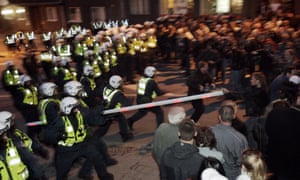
The digital attack that brought Estonia to a standstill 10 years ago was the first shot in a cyberwar that has been raging between Moscow and the west ever since It began at exactly 10pm on 26 April, 2007, when a Russian-speaking mob began rioting in the streets of Tallinn, the capital city of Estonia, killing one person and wounding dozens of others. That incident resonates powerfully in some of the recent conflicts in the US. In 2007, the Estonian government had announced that a bronze statue of a heroic second world war Soviet soldier was to be removed from a central city square. For ethnic Estonians, the statue had less to do with the war than with the Soviet occupation that followed it, which lasted until independence in 1991. For the country’s Russian-speaking minority – 25% of Estonia’s 1.3 million people – the removal of the memorial was another sign of ethnic discrimination. Russia’s government warned that the statue’s removal would be “disastrous” for Estonia. That evening, Jaan Priisalu – a former risk manager for Estonia’s largest bank, Hansabank, who was working closely with the government on its cybersecurity infrastructure – was at home in Tallinn with his girlfriend when his phone rang. On the line was Hillar Aarelaid, the chief of Estonia’s cybercrime police. Continue reading… Source: https://www.theguardian.com/technology/2017/dec/02/fake-news-botnets-how-russia-weaponised-the-web-cyber-attack-estonia Tags: *Headlines*, #Headlines, #TheNewz, Fake News | #FakeNews, Russia | #Russia, World News | #WorldNews, #TopNews, #Trending
Original Post: https://droolindog.net/2017/12/02/fake-news-and-botnets-how-russia-weaponised-the-web/
Original Post: https://droolindog.net/2017/12/02/fake-news-and-botnets-how-russia-weaponised-the-web/
No comments:
Post a Comment